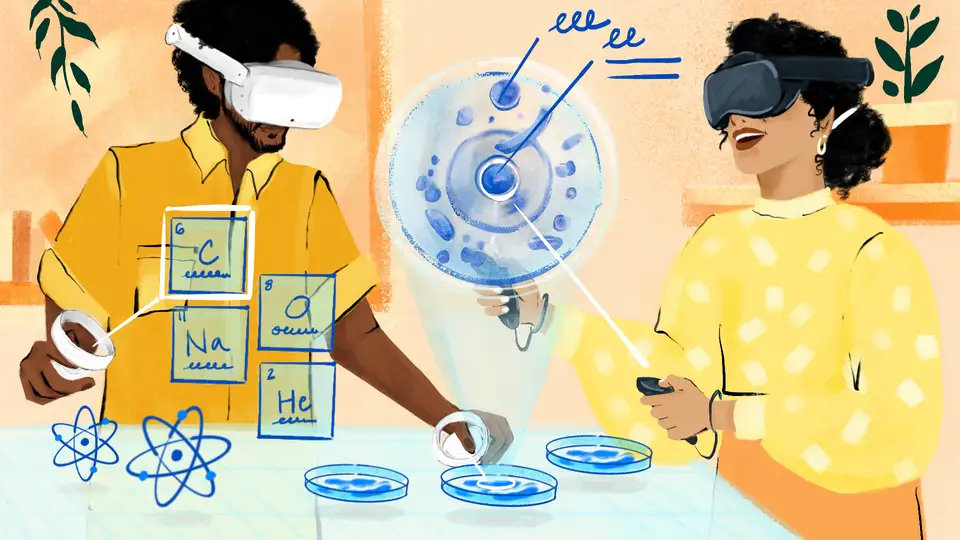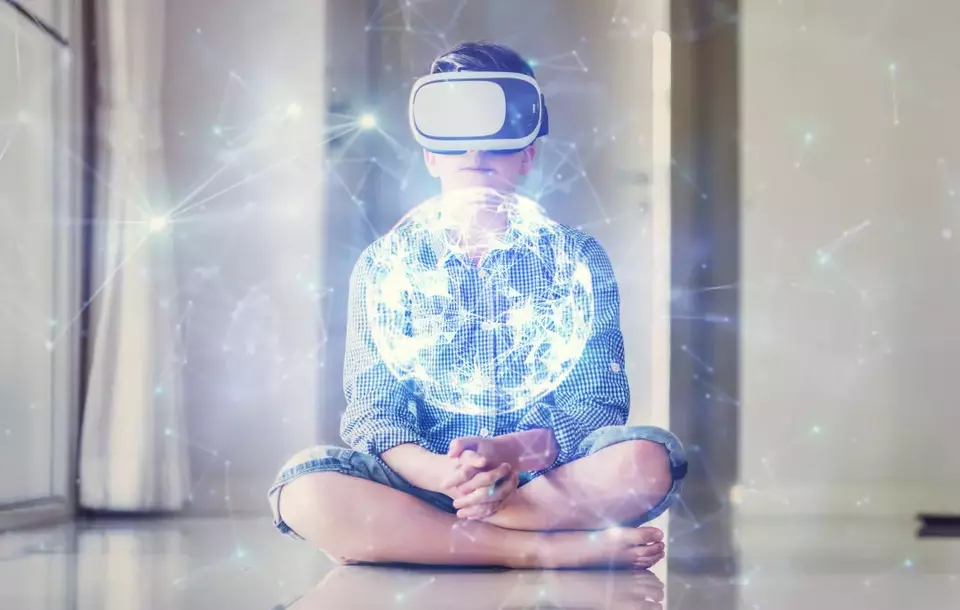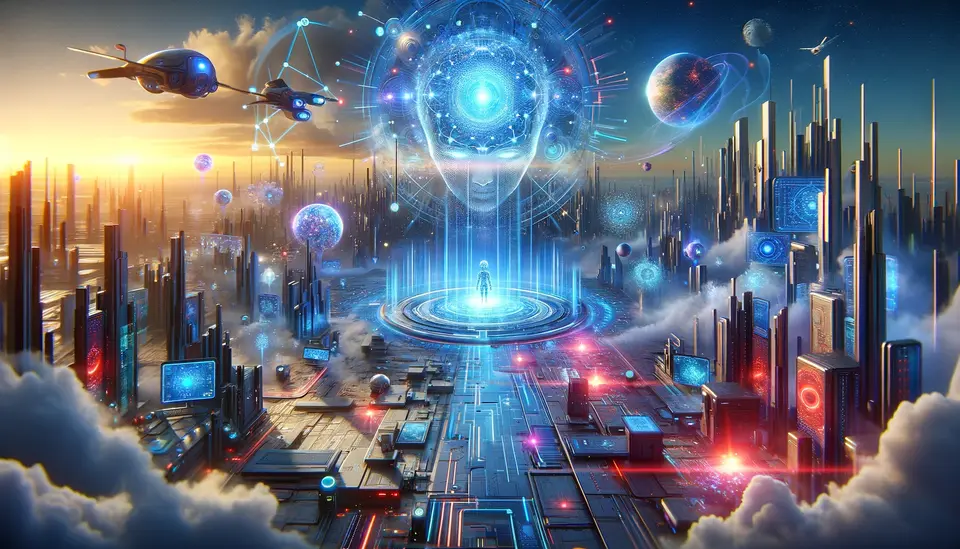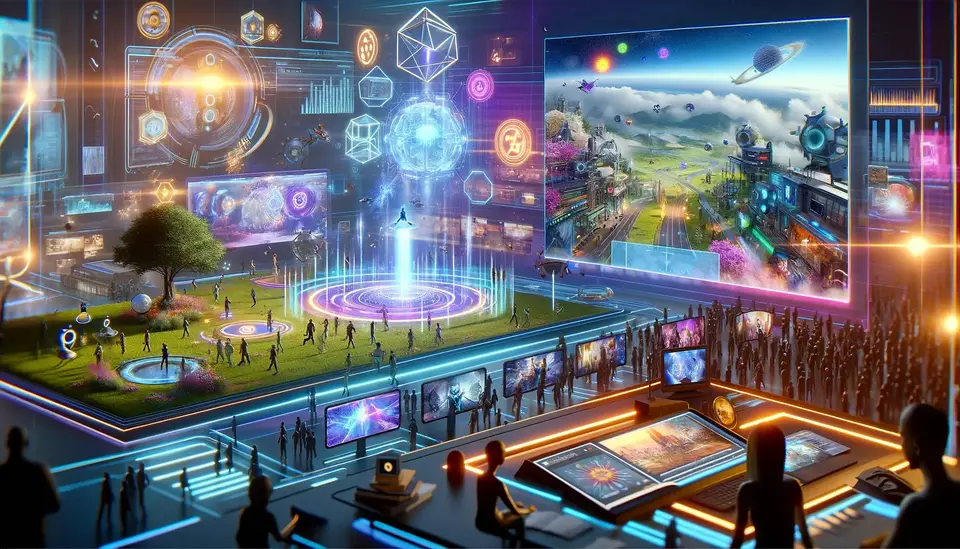How Metaverse Changes the Way Kids Learn & Develop Skills
Posted on July 14, 2023 7 minutes 1374 words
Table of contents
- Shaping the Future of Learning
- Developing New Skills for the Digital Age
- Addressing Potential Challenges
- Conclusion
In recent years, a new term has emerged in the realm of digital technology: the metaverse. A fusion of virtually enhanced physical reality and physically persistent virtual reality, the metaverse promises to blur the line between the digital and physical worlds in ways we’ve never seen before. This emerging landscape presents an array of exciting opportunities, especially in the field of education. Let’s delve into how the metaverse is revolutionizing children’s learning and skill development.
Shaping the Future of Learning
The metaverse is revolutionizing education by providing immersive, personalized, and collaborative experiences. It’s much more than an evolution in technology—it’s a shift in the paradigm of how learning happens. Let’s break down the key ways the metaverse is influencing learning.
Immersive and Interactive Learning: The New Era of Experiential Education
Traditionally, learning has been a passive process, with students often sitting idly, absorbing knowledge from textbooks and lectures. The metaverse, however, provides a much-needed shift towards active learning.
Experiencing the Past
Imagine a history class where students don’t just read about the French Revolution—they experience it. They can walk alongside Robespierre, witness the storming of the Bastille, or participate in the Reign of Terror. They can feel the tension, the passion, and the fear, fostering a profound understanding of historical events that no textbook can ever match.
Visualizing Complex Concepts
In science and math, students often struggle with abstract concepts. The metaverse can bring these concepts to life. They can explore the inner workings of a cell, visualize the Fibonacci sequence, or manipulate a virtual parabola to understand quadratic equations. By interacting with these concepts in a 3D virtual environment, students gain a much deeper understanding, fostering a love for subjects that were once considered difficult.
Personalized Education: AI-driven Individual Learning Pathways
Every child is unique, and so is their learning style and pace. The metaverse, with its AI-driven bots and avatars, caters to these differences by providing personalized learning experiences.
Adaptive Learning
The AI in the metaverse can monitor a child’s progress, identify strengths and weaknesses, and adapt lessons accordingly. If a child struggles with fractions, for example, the AI can provide additional exercises or explain the concept differently. This adaptive learning not only aids understanding but also boosts the child’s confidence in their abilities.
Lifelong Learning
Moreover, the metaverse facilitates lifelong learning by offering a vast array of learning resources. Students can pursue their interests, explore new topics, and acquire new skills at their own pace, cultivating a love for learning that extends beyond the traditional school years.
Collaborative Learning: A Global Classroom without Borders
The metaverse is a global classroom without borders. It transcends geographical boundaries, uniting students from across the world in a shared learning experience.
Cultivating Global Citizens
Children can collaborate on projects with peers from different cultures and backgrounds, gaining a broader perspective and understanding of global issues. They can participate in debates, group tasks, and problem-solving activities, fostering critical thinking, empathy, and respect for diversity.
Developing Teamwork and Communication Skills
The collaborative nature of the metaverse also helps develop essential soft skills. By working together on projects, children learn to communicate effectively, delegate tasks, handle conflicts, and appreciate the value of teamwork. These skills are critical for their personal and professional lives in an increasingly interconnected world.

Bridging the Gap Between Theory and Practice
The metaverse also provides a virtual platform for practical applications of theoretical knowledge. Whether it’s experimenting with chemical reactions in a virtual lab or building a digital city to understand urban planning, the metaverse allows students to apply their knowledge in safe, controlled, yet realistic environments.
In conclusion, the metaverse isn’t just changing how we teach—it’s changing how we learn. It’s creating an environment where learning is not just a necessity but a captivating, interactive journey of exploration, discovery, and growth. This is the future of education. And the future is here.
Developing New Skills for the Digital Age
As we march towards a future increasingly shaped by technology, the skills required to succeed in the 21st century are changing. The metaverse, as a frontier of this digital age, fosters the development of these crucial skills. Here, we’ll explore how the metaverse promotes coding literacy, fuels creativity and innovation, and instills principles of digital citizenship.
Coding and Digital Literacy: Building Blocks of the Future
The metaverse isn’t just a playground; it’s a learning laboratory where children can develop an understanding of the digital world that will dominate their future. This primarily involves learning to code and developing digital literacy.
Learning to Code: The New Universal Language
Coding is the language of the future, and the metaverse offers an immersive and enjoyable way for children to learn it. Children can create avatars, build structures, or even design entire worlds using code. This interactive approach makes coding less daunting and more approachable, providing a solid foundation for future learning in computer science and related fields.
Digital Literacy: More Than Just Operating Devices
But digital literacy goes beyond just coding. It includes understanding how digital systems work, how to use digital tools effectively, and how to evaluate and use information in the digital age. Through their experiences in the metaverse, children learn how to navigate the digital landscape and become proficient users of technology, preparing them for a future where these skills will be paramount.
Creativity and Innovation: Fostering the Innovators of Tomorrow
The metaverse, with its limitless possibilities, serves as a platform for fostering creativity and innovation.
Unleashing Creativity: The Limitless Canvas
With the ability to create their worlds, design their games, and write their stories, the metaverse provides children with a digital canvas to express their creativity. They can experiment with designs, colors, and structures, pushing the boundaries of their imagination and learning to think outside the box.
Cultivating Innovation: Problem-solving in the Digital World
The metaverse also promotes innovation. As children navigate the metaverse, they often encounter challenges that require unique solutions. Whether it’s designing a digital city with sustainable resources or troubleshooting code, these experiences encourage children to think critically and creatively, fostering a mindset of innovation.
Digital Citizenship: Preparing Responsible Digital Natives
The metaverse provides an opportunity for children to learn about the rights and responsibilities of being digital citizens.
Understanding Digital Rights and Responsibilities
Within the metaverse, children learn about the importance of privacy and the need for respecting others’ digital space. They understand the implications of sharing personal information and learn to distinguish between reliable and unreliable sources of information.
Cyber Safety: Staying Safe in the Digital Universe
Just as children need to learn how to cross the street safely, they also need to learn how to navigate the digital world safely. The metaverse offers a controlled environment where they can learn about online threats and how to protect themselves from cyber dangers.
Netiquette: Learning the Etiquette of the Digital World
Navigating the digital social world also requires understanding netiquette—the etiquette of online interactions. In the metaverse, children learn to communicate respectfully and responsibly, promoting a healthy online community.
To summarize, the metaverse isn’t just a revolutionary tool for teaching traditional subjects; it’s also a platform for instilling the essential skills for the digital age. By embracing the metaverse, we are not just preparing our children for the future—we’re empowering them to create it.
Addressing Potential Challenges
Despite the numerous opportunities, the metaverse also presents some potential challenges. The increased screen time can impact children’s physical health, while privacy and data security remain valid concerns in this new realm. Additionally, the digital divide could exacerbate educational inequalities, with not all children having equal access to these advanced tools. It’s crucial for educators, parents, and policymakers to proactively address these issues, ensuring a healthy, safe, and equitable metaverse experience for all children.
Conclusion
The metaverse represents a seismic shift in the way we approach education and skill development. It offers exciting opportunities to engage students in new, dynamic ways, fostering a deep love for learning, and preparing them for the digital age. As we step into this brave new world, let’s embrace these possibilities while remaining vigilant of the challenges, guiding our children towards a bright and innovative future.








